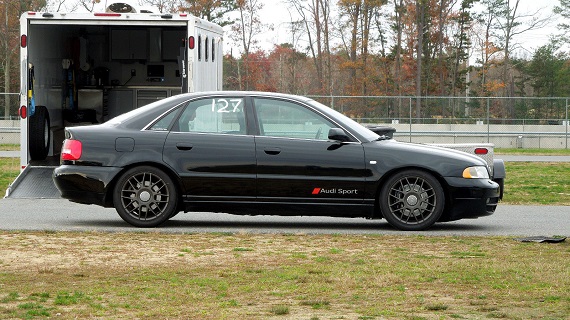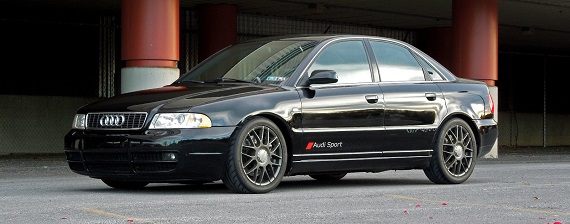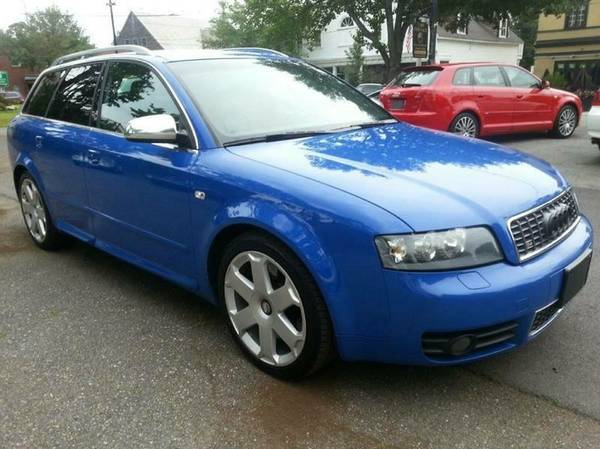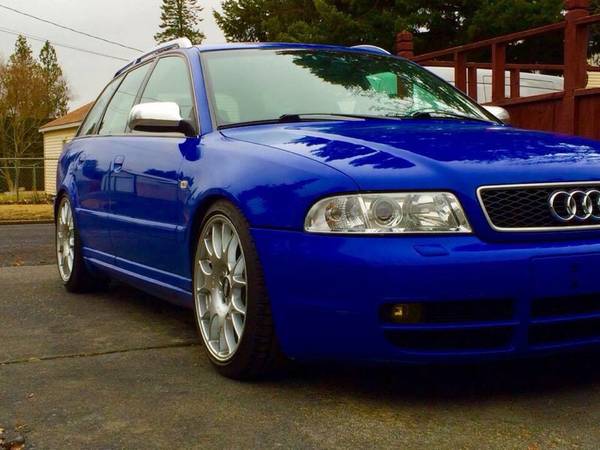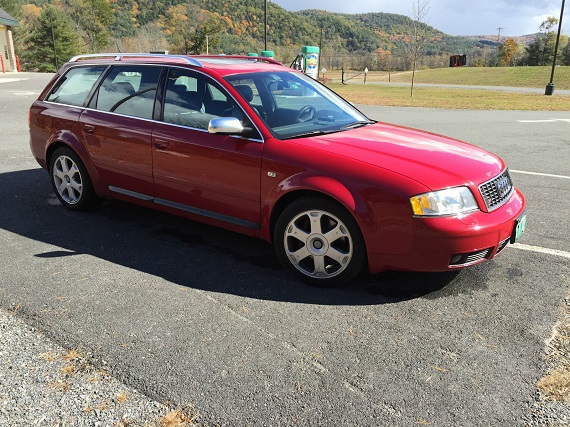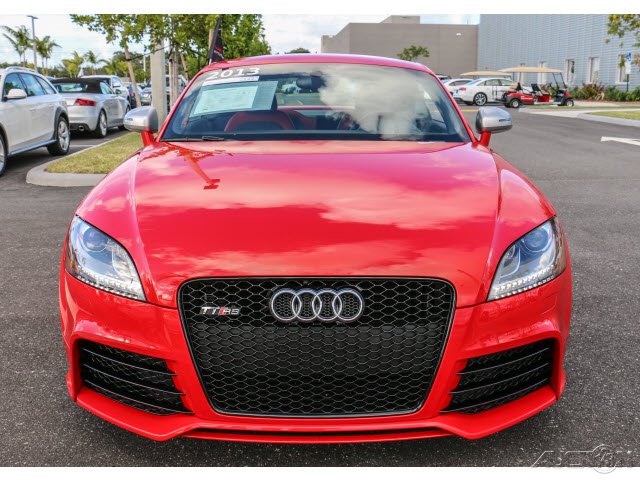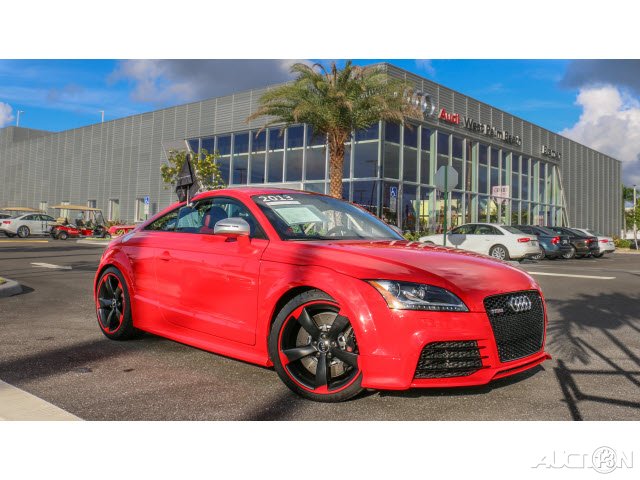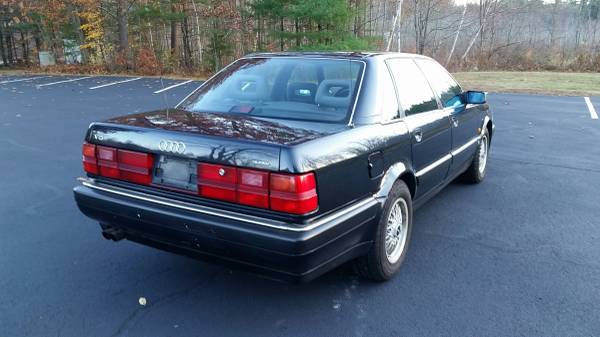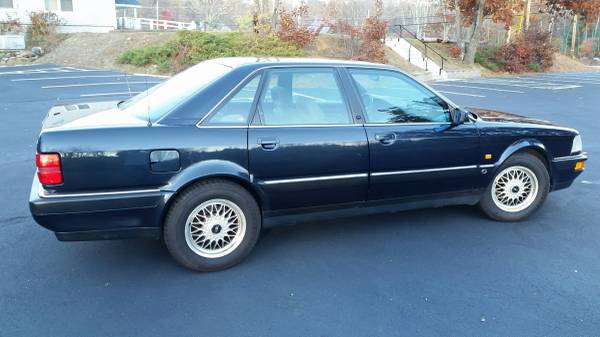Why does the Audi S4 not get more attention on Motorsports Monday? Well, for most the generally heavy platform coupled with the forward bias of the relatively heavy motor doesn’t equal track excitement. Motivation has never been a problem with Audi’s fastest small chassis cars, but braking and turning aren’t where the excel – especially compared to the competition from Munich and Stuttgart. However, a recent ride in my stripped-out and stiffened-up Audi left me the best part of an inch shorter and thinking. Going to the track is such a great time, but there must be a better balance between the 95% of the time that the car isn’t at the track to the 5% it is – if you’re lucky. And while in all out track performance, it’s hard to argue with the E36 chassis as the best value going, the B5 S4 is a compelling alternative to have plenty of fun in between – and, year round:
Tag: Audi
Audi established a new bar for fast wagons with the RS2 Avant, and the signature color of that model was termed “RS Blue”. Immediately, the vibrant hue was recognizable as the warning sign to other drivers that more lurked under the hood than most normal grocery getters. Audi would continue this trend and signature color with the new quattro GmbH-made S6 Plus a few years later. But in 2001, Audi made the exclusive color a bit more pedestrian by offering it on the B5 S4. Now termed “Nogaro Blue Pearl”, it developed an immediate fan following since then – as now – for most, purchasing either a RS2 or S6 Plus isn’t in the cards. Audi continued the shade on to the B6 platform, where it continued to be the defacto shade of speed until it was discontinued in the B7 chassis. While Audi has recently brought the color back into its lineup, for many the older cars still have a distinctive draw and Nogaro cars typically demand a premium. For some, that premium is heightened even more when the interior was opted with the Nogaro colored Alcantara. Add in Avant and 6-speed to the option list on these cars, and the collective Audi fanboy community draws a sharp breath as lips are bitten and pants decidedly tighten. As a treat, we have two examples to consider – which is more Nogtastic?
CLICK FOR DETAILS: 2001.5 Audi S4 Avant on Washington DC Craigslist
Comments closedWhereas the C4 S6 Avant had been the only high performance wagon in the Audi line in 1995, when it came to the early 2000s Audi had gone hog wild with options. In the both the A4 and A6 lineup, you could get the then potent 3.0 V6 and it could be opted with a 6-speed manual in the small chassis. While long term that engine has proven quite problematic, at the time it offered 60 horsepower more than the V6 had only a generation earlier – a substantial bump. Then there was the much loved B5 S4 Avant, with its twin-turbocharged V6 which again could be mated to a 6-speed manual. That same setup was available in the large chassis Allroad as well, though more often than not the C5 was equipped with the 5-speed Tiptronic automatic gearbox – the transmission that was the only option for the 3.0. If that wasn’t a stout enough lineup, Audi also launched a revised S6 in 2002. Borrowing some of the aluminum elements from the A6 4.2, the S6 featured flared lightweight fenders and hood, larger 17×8″ Avus wheels with a wider offset than the B5 chassis wheels (though visually there was no change), lower door blades, a revised grill and polished aluminum mirrors and roof rails which had become the signature of the S-series cars. All of these elements would later be incorporated into the B6 S4 Avant. With 340 horsepower, the C5 S6 was capable of sub-6 second runs to 60 m.p.h. and could cruise effortlessly at triple digit speeds. Though it didn’t look much different than the rest of the C5 Avant lineup, it was most certainly the Alpha in the Audi wagon lineup in 2002-2003:
CLICK FOR DETAILS: 2002 Audi S6 Avant on eBay
1 CommentThere are two ways to look at the TT RS. Either it’s a very expensive and over complicated Golf, or it’s a really cheap Porsche. Which camp you fall in to probably relates back to your general feelings about Audi’s engineering and platforms, but the VAG group has done a masterful job of filling nearly every conceivable niche with a specific model which suits the needs of a seemingly minuscule group of buyers. Consider, for just a moment, the number of 911 variants that Porsche offers. Not including color and interior variations (and forget Porsche’s individual program for a second), there are 21 variants of the 911 for sale in the U.S. right now. 21. That’s nuts. But that’s about on par with what Volkswagen has done with the Golf – producing not only the many Golf models, but also the Golf-based Jetta, A3, S3, Q3, Tiguan, Touran, Passat, several European Skodas, Seats, and – of course – the Audi TT. But while there are hot versions of the Golf available in a few different flavors, Audi took the TT RS to the next level, replacing the typical 2.0T motor with a 2.5 liter turbocharged inline-5 that hearkened back to the great 1980s designs. Sure, the motor was now transverse, and you can complain about that all you’d like. But the performance of the TT RS is undeniable – 0-60 in 3.6 seconds (with the DSG box), nearly 1 g on the skidpad and seemingly endless acceleration up to 175 m.p.h. from the 360 horsepower 5-pot. And, all of this was available for around $60,000. You also got a revised exterior with go-faster grills and plenty of special looking accents both inside and out. With only around 1,000 imported, exclusivity was guaranteed and these TT RSs are fan favorites already that are likely to retain a strong value in the marketplace:
CLICK FOR DETAILS: 2013 Audi TT RS on eBay
1 CommentMuch as the Quattro set the trend for performance turbocharged all-wheel drive coupes in the 1980s, Audi launched another trend-setter in 1988. The V8 quattro was not an all-new design; it borrowed heavily from the Type 44 200 chassis, but several revisions completely redefined the character of Audi’s flagship. First was the motor, an all-aluminum quad cam V8 coded PT displaced 3.6 liters initially. If you thought it was effectively two Volkswagen 16V motors sandwiched together, you thought correctly – Audi mimicked what Porsche had done with the 944/928 motor designs. With 240 horsepower, the new V8 offered about a 20% boost in power over the 10V turbo motors that were in the European 200s. But the real innovation wasn’t the motor – it was the automatic transmission. Combining a multi-plate clutch center differential and an all-new Torsen rear differential, the V8 quattro drove decidedly quite differently than the inline-5 variants. Weight, while not down thanks to a host of luxury items, was moved backwards and the V8 was more balanced and less prone to understeer than the turbos were. Additionally, the torque was near instant. But by 1991, the gap between the now 20V variant of the 200 and the V8 was so narrow that Audi upped the displacement. The new ABH V8 upped the power to 276 horsepower and 296 lb.ft of torque. Outside, subtle changes helped to distinguish the luxury variant after Audi’s brief foray into absolutely no badging from 1990-1991. Now with small “V8” monikers front and rear, along with a small “quattro” script, the performance was quite a bit improved over the earlier car. Additionally, there were small changes to the 4.2 model – such as some new colors, a transmission cooler and a mildly revised cockpit featuring the updated climate control. But outside remained effectively unchanged, as the 4.2 wore the same forged BBS RG wheels that the 1991 3.6 V8s had. What was always a bit special was the presentation of the V8 quattro – low, hunkered down and widened over the normal slab-sided 200, the headlights and hood treatment hinted at the revised Audi design language that would carry through to the mid-2000s. Plus, the V8 quattro sported some awesome flares to pull it all together. If you like cars such as the 500E and 540i, you can thank the V8 quattro for establishing the benchmark for them. Yet considered over-complicated and prone to mechanical failure, few of these pioneering luxury Autobahn cruisers survive in the U.S. today:
